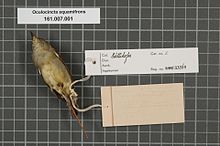| Pygmy white-eye | |
|---|---|
 | |
| Scientific classification | |
| Domain: | Eukaryota |
| Kingdom: | Animalia |
| Phylum: | Chordata |
| Class: | Aves |
| Order: | Passeriformes |
| Family: | Zosteropidae |
| Genus: | Heleia |
| Species: | H. squamifrons |
| Binomial name | |
| Heleia squamifrons (Sharpe, 1892) | |
The pygmy white-eye (Heleia squamifrons), also known as the pygmy ibon and pygmy heleia, [2] is a species of bird in the white-eye family Zosteropidae.
